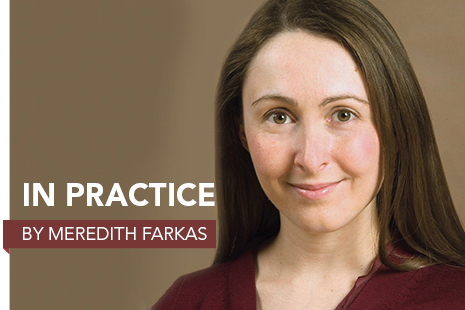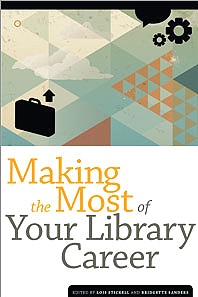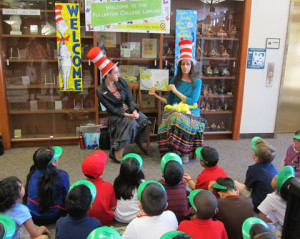
Whatever issues I may have had with an unnamed discovery tool as a librarian, I always believed that it was an easier tool for students to use than our OPAC. And then I met Steve (not his real name). Steve is a participant in an ethnographic study two colleagues and I are conducting to better understand the research habits and needs of returning students.
I was observing students conducting research to see how they approached it and what tools they used, but when I saw Steve use that discovery tool, it was difficult to focus on anything else. Seeing that he was so overwhelmed by the number of links and buttons on an item record that he couldn’t even figure out how to get to the full text of the article made me realize how difficult all those options make it for the novice to use.
Librarians’ vantage point
As an expert user, I’d never considered how distracting all those options can be because I knew where to click and could therefore easily ignore the features I didn’t need. Seeing how a novice user navigated the system provided me with an insight I never could have had otherwise. Unless we observe or otherwise assess our users, we can’t truly understand how they navigate our systems.
This is why usability testing is such a valuable tool in our assessment arsenal. While there are many different kinds of usability testing methods, the most common typically involves subjects using a website and verbally sharing their thinking as they go through it. Often, subjects are given specific tasks to complete on the website so test givers can see if the subjects take the expected paths or can complete the task at all.
You don’t need a fancy usability lab or sophisticated technologies to conduct a usability test. All you really need is a computer and the ability to take notes. If you want to record the session, you’ll need a microphone and a free tool like Screencast-O-Matic, CamStudio, or Google Hangouts. If you want to broadcast the session to people in another room, Google Hangouts, join.me, or the free version of WebEx would work well for this purpose.
Small sample, big findings
Unlike a survey, you also don’t need a huge sample to be able to learn from a usability test. Some usability experts recommend using as few as three subjects in your study. For a usability test we’re conducting on a new online instructional tool, we’re using six undergraduate students. As I showed in my example above, even watching one student use our systems can provide some valuable insights.
Usability testing also isn’t just for our online tools; it can easily be applied to look at physical space as well. What do people see first when they enter the library? How easy is it to find the children’s room? Seeing how users experience the library building can help librarians notice issues they would never have otherwise. Often, it’s the little things that create a great experience, and usability testing can help pinpoint those that might get in the way.
When Steve couldn’t find the full text, he gave up looking for it and quickly stopped using the discovery tool entirely. If users are willing to try exploring library resources at all in their research, libraries often have only one chance to make a good impression.
Ensuring that our website and tools are as usable as possible is critical. Usability testing can help us discover the bumps in the road we need to smooth over to provide a positive experience for our users.


